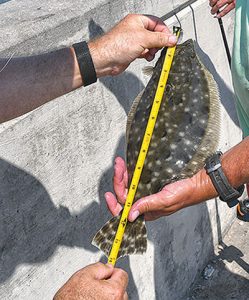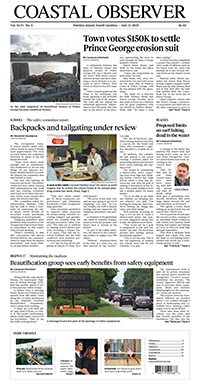Environment
Flounder limits change, with license fee funding hatchery

A $5 rise in the price of a saltwater fishing license that took effect July 1 will help fund a hatchery that is part of the state’s efforts to restore the flounder stocks in Georgetown and Horry counties.
But it will be years before the hatchery can start to provide fish, so the size limit on flounder will increase from 15 to 16 inches and the daily catch limit will drop from 10 to five fish (10 fish per boat, down from 20).
“At the end of the day, there were several things that were accomplished. Most everybody considered it a step in the right direction,” said state Rep. Lee Hewitt, a Murrells Inlet Republican, who sponsored a bill that led to the new limits.
The hatchery, and the increase in the license fee to pay for it, were added in the Senate.
“Overall, I thought it was a good bill,” said state Sen. Stephen Goldfinch, who is also a Murrells Inlet Republican.
Goldfinch would like to see the hatchery located at Hobcaw Barony, since it would benefit from the work of scientists who do research on the property and because 80 percent of the hatchlings will end up on the north coast. “I’m quietly telling people it makes more sense to go to Hobcaw.”
The state budget includes $3.5 million to upgrade the state’s Waddell Mariculture Center in Beaufort County. “It’s got tanks that are not being used. That’s where the people are,” Hewitt said.
He also supports establishing a flounder hatchery in Georgetown County. The state will save money on transportation costs and likely raise the viability of the hatchlings, he said. The idea was discussed by the Ways and Means Committee, on which he serves, but they decided to focus on renovating the existing facility to get the hatchery program started.
“It was a lot of trial and error in Texas,” which has a hatchery, Hewitt said. “Hopefully we can learn from them.”
The increase in the cost of a fishing license is the first in 20 years. It puts the cost for residents on par with neighboring states, according to the state Department of Natural Resources.
The agency had pushed for a regional solution to restoring the flounder fishery in legislative hearings. North Carolina accounts for 57 percent of the flounder caught in that state, South Carolina and Georgia. South Carolina accounts for 10 percent. North Carolina closed its recreational flounder fishery, which increased pressure on South Carolina stocks.
Hewitt’s bill was a response to DNR’s proposal to create a six-month flounder season and set a catch limit of two fish.
The original bill included a “slot limit” that limited the catch to one fish of 20 inches or more.
Hewitt based that on data from the Coastal Conservation Association that showed the larger fish lays a million eggs a year.
“It was a way to allow Mother Nature to heal itself, and then we could bring the hatchery online,” he said.
Some lawmakers balked at the slot limit. They saw it as a way to end flounder gigging, Hewitt said, because the flounder can’t be measured before they are gigged.
It will take a year to get the hatchery started and a couple of more years to raise the flounder, Hewitt said. It is estimated that it will eventually produce 200,000 hatchlings a year.




